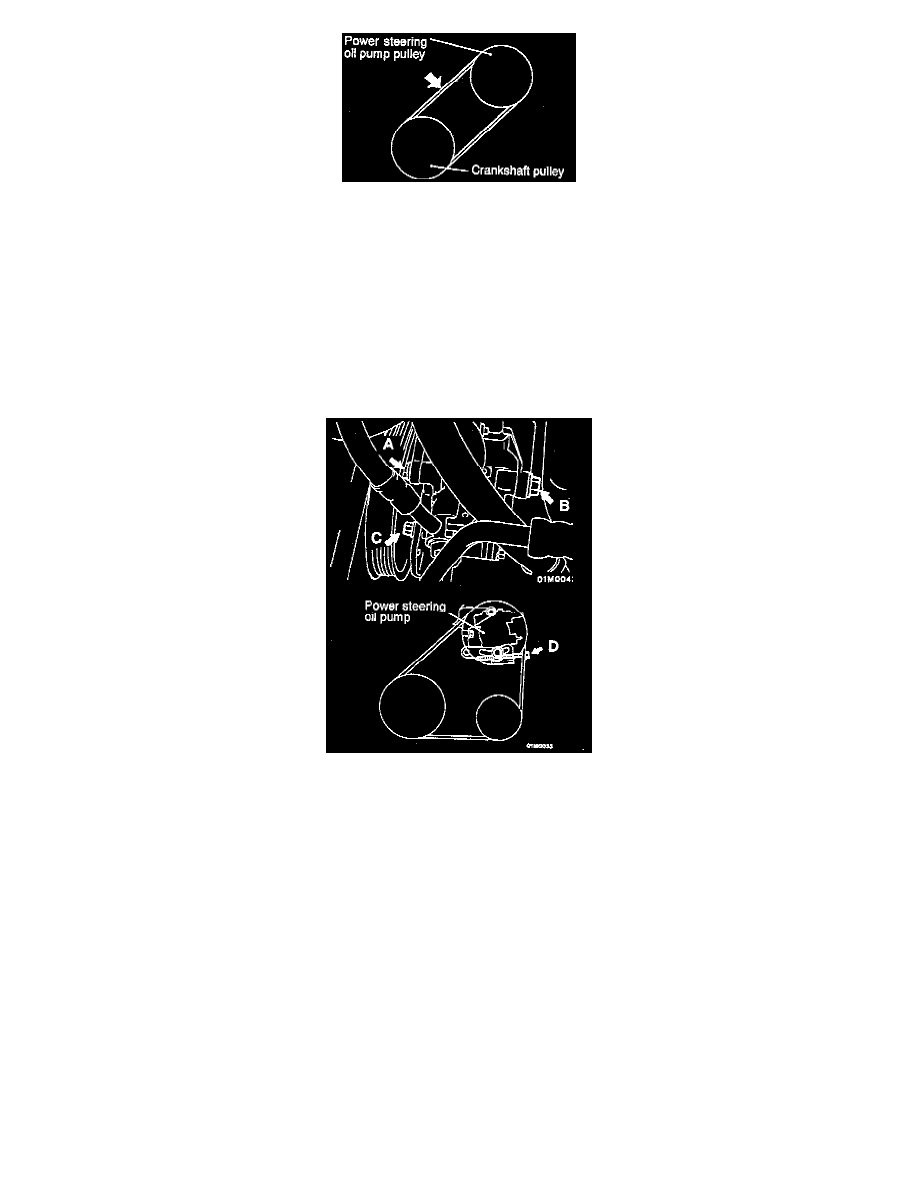Mirage Sedan DE L4-1468cc 1.5L SOHC MFI (1997)

TENSION CHECK
1. Use a belt tension gauge to check that the belt tension is at the standard value at a point half-way between the two pulleys (indicated by an arrow in
the illustration). In addition, press this section with a force of 98 N (22 lbs.) and check that the amount of belt deflection is at the standard value.
When checked:
Tension: 392 - 588 N (88 - 132 lbs.)
Deflection: 9.6 - 12.4 mm (0.38 - 0.49 inch)
When a used belt is installed:
Tension: 441 - 539 N (99 - 121 lbs.)
Deflection: 10.2 - 11.6 mm (0.40 - 0.46 inch)
When a new belt is installed:
Tension: 637 - 833 N (143 - 187 lbs.)
Deflection: 7.2 - 9.0 mm (0.28 - 0.36 inch)
2. If the tension or deflection is outside the standard value, adjust by the following procedure:
a. Loosen power steering oil pump fixing bolts A, B and C.
b. Adjust the amount of belt deflection using adjusting bolt D.
c. Tighten fixing bolts A, B and C.
Tightening torque:
Bolts A and B: 39 Nm (29 ft. lbs.)
Bolt C: 49 Nm (36 ft. lbs.)
d. Check the belt deflection amount and tension, and readjust if necessary.
NOTE: Check after turning the crankshaft once or more clockwise (right turn).
